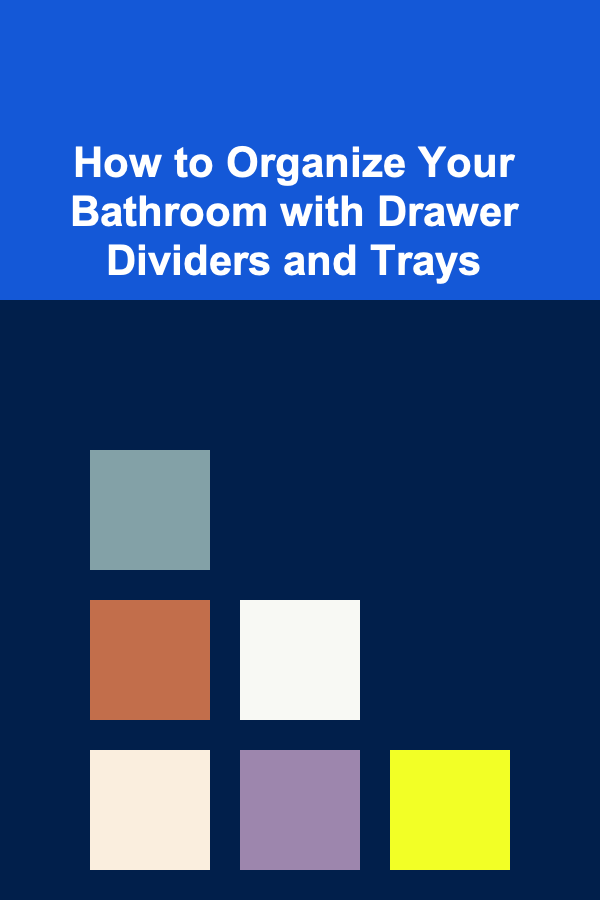
How to Customize Your Internship Application Checklist for Specific Roles
ebook include PDF & Audio bundle (Micro Guide)
$12.99$5.99
Limited Time Offer! Order within the next:

Landing an internship in your chosen field is an exciting and pivotal step in your career journey. Whether you're aiming to gain experience in engineering, marketing, finance, design, or any other field, tailoring your internship application to the specific role you're applying for is crucial. An internship not only provides hands-on experience but also helps you build professional relationships, sharpen your skills, and establish yourself as a promising candidate for future job opportunities.
One of the most essential components of applying for an internship is having a well-organized, customized application checklist. While many candidates follow generic guidelines when applying for internships, the most successful applicants take the time to customize their checklists to suit the unique demands and expectations of the role they're aiming for.
This article will explore the process of creating a customized internship application checklist for specific roles, covering the key components to focus on, the importance of each, and how you can make your application stand out in a competitive environment. We will also discuss the benefits of personalization, how to align your skills with the job description, and how to manage your time efficiently during the application process.
Why Customizing Your Internship Application Checklist Matters
When applying for internships, generic applications rarely stand out. While it might be tempting to use a one-size-fits-all approach, it's important to remember that employers receive numerous applications for each internship opening. In order to capture the attention of hiring managers, you need to demonstrate that you've not only understood the job role but also put in the effort to align your application with the company's needs and expectations.
Customizing your internship application checklist allows you to:
- Highlight Relevant Skills and Experiences: Tailoring your application shows that you understand the key skills required for the specific role and can demonstrate how your experiences match those requirements.
- Showcase Your Interest and Commitment: When you customize your application, you demonstrate genuine interest in the role and company, signaling that you are not simply applying for every opportunity available.
- Maximize Your Chances of Getting Noticed: A well-customized application checklist increases your chances of standing out from the pool of candidates who are using generic approaches.
- Increase the Likelihood of Interview Invitations: By focusing on what matters most for the role, you increase the chances of passing initial screenings and landing an interview.
Now, let's break down how you can create a customized checklist that aligns with your target role.
Key Components of a Customized Internship Application Checklist
A comprehensive internship application checklist should cover several key components that demonstrate your preparedness, qualifications, and enthusiasm for the role. Here's a step-by-step breakdown of how to customize each component based on the role you're applying for.
1. Research the Role and the Company
Before starting any internship application, thorough research is essential. You need to have a clear understanding of the role, the company culture, and the industry. Customizing your application checklist starts with this foundational step.
- Role Requirements: Go through the job description carefully. Identify the specific skills, qualifications, and experiences that the company is seeking in applicants. Focus on the technical and soft skills mentioned in the description, such as proficiency with certain software, the ability to work in a team, or communication skills.
- Company Culture: Research the company's values, mission, and culture. This information will help you customize your cover letter, resume, and interview responses to reflect how your values align with the company's.
- Industry Trends: Understanding the latest trends, challenges, and innovations in the industry where the company operates can give you a competitive edge in your application and interviews. Knowing the specifics of the industry helps you demonstrate how you can contribute to the company's goals.
2. Customize Your Resume and Cover Letter
Your resume and cover letter are the first things employers will see, so they must be customized for each application. Rather than using a generic template, tailor these documents to highlight the skills and experiences that are most relevant to the role.
-
Resume:
- Highlight Relevant Experience: Focus on the skills, coursework, projects, or volunteer work that directly relates to the internship. For instance, if you're applying for a software development internship, highlight any programming languages you've worked with, coding projects, or software-related coursework.
- Use Action Verbs and Quantifiable Achievements: Instead of simply listing duties, use action verbs and measurable outcomes to demonstrate your impact in previous roles (e.g., "Developed a website that increased traffic by 25%").
- Include Relevant Keywords: Many companies use applicant tracking systems (ATS) to screen resumes. Including industry-specific keywords from the job description can help your resume get past these systems.
-
Cover Letter:
- Demonstrate Your Interest: A strong cover letter should show why you're passionate about the role and the company. Connect your skills and experiences to the job requirements and explain why you're a perfect fit.
- Focus on What You Can Contribute: While it's important to talk about how the internship aligns with your career goals, don't forget to mention how you can add value to the team or project.
- Be Specific: Avoid generic phrases like "I'm a quick learner." Instead, provide examples of how you've demonstrated key skills in the past.
3. Prepare Your Portfolio (if Applicable)
For certain internships, especially in creative fields like design, marketing, journalism, or software development, a portfolio is a key component of your application. A well-curated portfolio can help demonstrate your capabilities in a tangible way.
- Showcase Relevant Work: Include projects or work that directly relate to the internship role. For example, if you're applying for a graphic design internship, display examples of branding, website designs, or illustrations that demonstrate your creativity and skill.
- Organize and Present Clearly: Present your work in a professional format. Whether it's a personal website, a PDF, or an online portfolio (such as Behance for designers or GitHub for developers), make sure it's easy to navigate and visually appealing.
- Include Personal Projects or Side Projects: If you don't have paid or professional experience, don't be afraid to showcase personal or school projects that demonstrate your skills. This will show initiative and passion for your craft.
4. Gather Your References
References are a critical part of your internship application. Ensure you have a few trusted individuals who can speak to your skills, character, and potential. This could include professors, previous employers, or mentors who can vouch for your suitability for the internship.
- Choose Relevant References: Tailor your references to the role you're applying for. For example, if you're applying for a technical role, ask a professor or supervisor who can speak to your technical abilities.
- Reach Out in Advance: Contact your references before submitting your application to ask for their permission and give them a heads-up on the role you're applying for.
- Provide Information: Make it easier for your references by providing them with information about the role and your resume. This ensures they can give a more targeted and effective reference.
5. Align Your Skills with the Job Description
One of the key components of customizing your internship application is making sure you align your skills and experiences with the job description. This involves understanding both the hard and soft skills required for the role and highlighting them in your application.
- Hard Skills: These are the technical skills required for the job, such as proficiency in software programs, coding languages, or industry-specific tools. For example, if you're applying for a finance internship, emphasize your knowledge of financial analysis software or Excel.
- Soft Skills: These include communication, teamwork, problem-solving, and time management. Many employers value these interpersonal skills just as much as technical proficiency, so make sure to highlight examples of when you've demonstrated these skills.
6. Prepare for the Interview
Once your application materials are ready, it's time to prepare for the interview. Research common interview questions for the role you're applying for, and practice crafting responses that tie back to your experiences and skills.
- Understand Role-Specific Questions: Different internships will require different types of interview questions. For instance, a marketing internship interview may ask you to come up with a mock campaign, while a technical internship might involve problem-solving scenarios.
- Show Enthusiasm: During the interview, demonstrate your enthusiasm for the role and the company. Companies are looking for interns who are excited to learn and contribute.
Time Management During the Internship Application Process
Applying for multiple internships can be time-consuming, but with proper time management, you can ensure that each application is personalized and well-executed. Here's how to efficiently manage your time during the application process:
- Create a Timeline: Keep track of application deadlines and set aside time each day to work on your materials.
- Batch Tasks: Group similar tasks together, such as researching companies, writing cover letters, or updating your resume, to work more efficiently.
- Stay Organized: Use a spreadsheet or a project management tool to track the internships you've applied to, deadlines, and interview dates.
Conclusion
Customizing your internship application checklist for specific roles is an essential step toward standing out in the competitive internship market. By thoroughly researching the role, aligning your skills with the job description, and tailoring your resume, cover letter, and portfolio, you demonstrate to employers that you are serious about the opportunity. Customization not only increases your chances of landing an internship but also sets the stage for a successful and fulfilling career. By following a structured approach, you ensure that your internship application is both comprehensive and focused on the skills that matter most for the role at hand.
Reading More From Our Other Websites
- [Home Cleaning 101] How to Clean a Shower Curtain: Your Ultimate Guide to Mildew-Free Freshness
- [Gardening 101] How to Start Your Own Kitchen Garden for Fresh Herbs and Veggies
- [Personal Investment 101] How to Invest in Frontier Markets
- [Sewing Tip 101] Choosing the Right Sewing Thread: A Guide to Fibers, Weights, and Colors
- [Home Family Activity 101] How to Have a Family "Restaurant" Night
- [Home Budget Decorating 101] How to Create a Coastal Look in Your Home Without Overspending
- [Home Staging 101] How to Stage Your Home for Different Seasons
- [Star Gazing Tip 101] Urban Constellations: Finding the Best Night Sky Spots in the City
- [Home Maintenance 101] How to Care for Your Tile and Grout to Keep Bathrooms Sparkling
- [Small Business 101] CRM Software for Small Business: Key Features to Look For

How to Build an Emergency Fund from Scratch
Read More
How to Declutter Your Home with Minimalist Storage Solutions
Read More
How to Organize Your Bathroom with Drawer Dividers and Trays
Read More
How to Stage Your Home in Preparation for a Move
Read More
How To Support Employee Wellbeing in a Remote Setup
Read More
How To Understand Data Rates for Video
Read MoreOther Products

How to Build an Emergency Fund from Scratch
Read More
How to Declutter Your Home with Minimalist Storage Solutions
Read More
How to Organize Your Bathroom with Drawer Dividers and Trays
Read More
How to Stage Your Home in Preparation for a Move
Read More
How To Support Employee Wellbeing in a Remote Setup
Read More